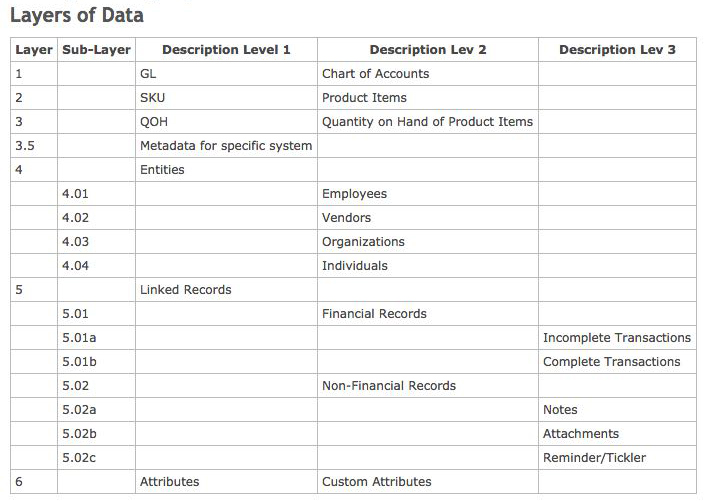Most people who use data on a daily basis just think of data as it relates to their application or software (such as “Contact or Leads”, or “Pipeline Data” or “Giving History”), but from the perspective of consultants consolidating or integrating systems, we have to break it down into patterns and flows, and work inside of (or sometimes establish for the first time) the database of record (DBoR) model to ensure data integrity and business continuity.
We have developed, and consistently leaned-on, an overly simplified lens through which to view all (yes, all/any, seriously) data in all systems; It is our “6 layer” model. It helps us compartmentalize all of the data in any project to allow for pattern identification and integration architecture approaches. Often our clients ask us: “can you glue this to that – then make it report on this”. This approach typically gets them 2 or more vendor products doing as well as they can – but often does not get the client a best of breed integration design. Best of breed does not need to mean expensive, either. More often than not we see out of the box systems (and their recommended approaches for implementation) as the most-expensive approach.
To help our clients consider (and create) their options, we break it all down into these 6 layers:
This 6 layer system is not meant to be a prescription for information consumption, it is meant to help data consolidation designers and teams like OpenIssue separate the “major flows” of data present in all information systems. We always accompany the 6 layer model with the ETA breakdown, as follows:
- Entities
- Transactions
- Attributes
Again, this is not meant to tell anyone “about” their data or information, it is meant to enable consolidation and integration teams to handle the data with all the constraints software and integration tools will force upon clients. By breaking things into layers and types, you can sequence your project better, and also manage your prioritization and budgets.
These approaches and tools help us manage timelines, budgets, and bring options to our clients.
Have I mentioned we love data and transition management? Thanks for reading..
